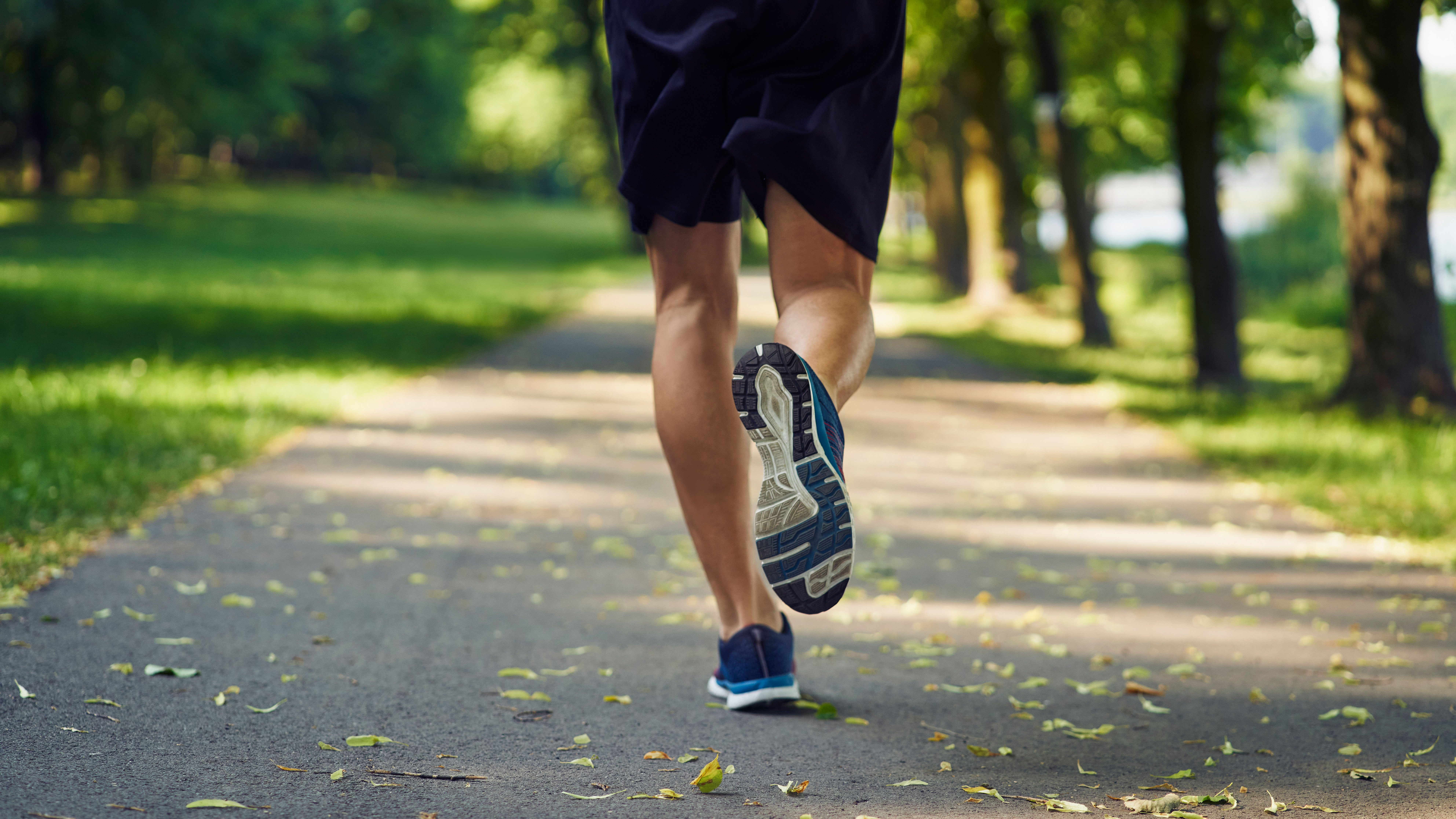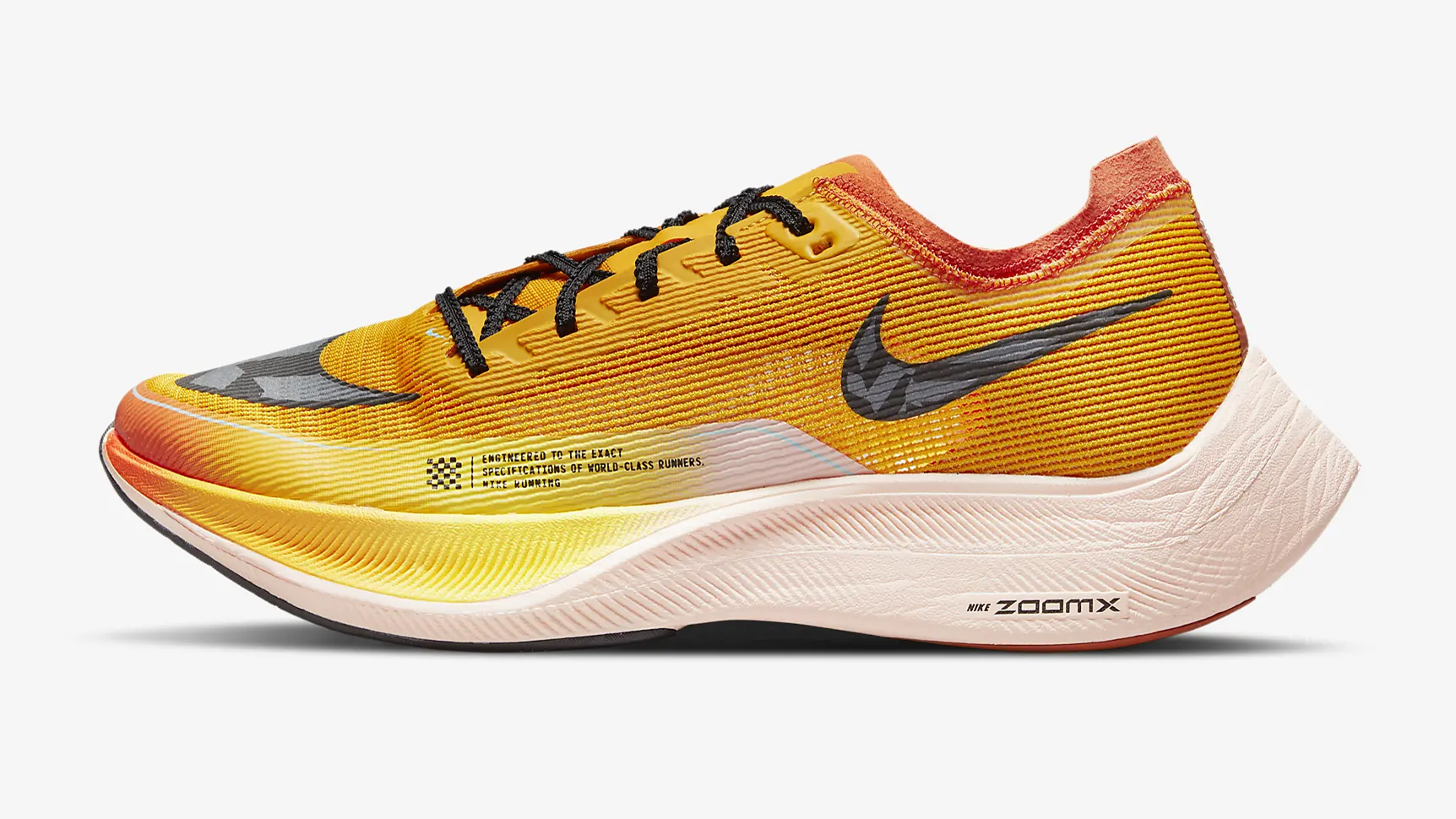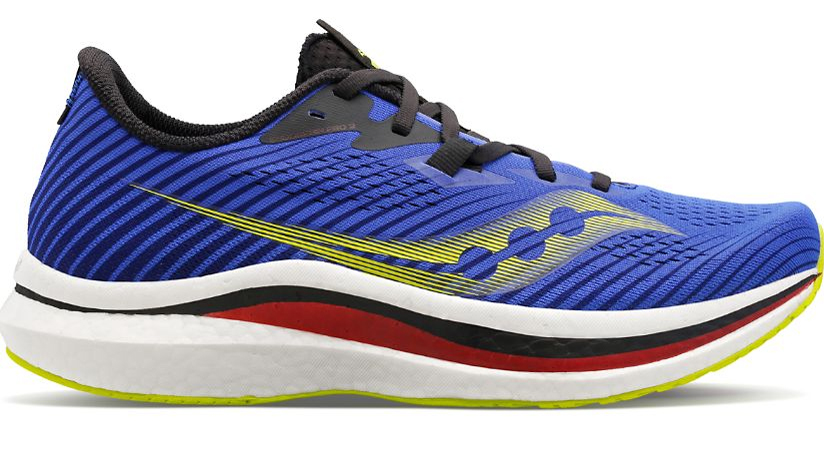Do running shoes make you faster?
Do running shoes make you faster? We quizzed the experts to find out if buying a pair of super shoes will help you run at a quicker pace

Elite athletics may swear by them but for the average Joe, do running shoes make you faster?
Sportswear brand Nike are leading the charge when it comes to ‘super shoes’ having specifically developed a pair to help Eliud Kipchoge break the sub two hour marathon record. But with an eye watering price of £240/ $300 upwards is it really worth buying a pair of shoes in the belief that they will make you run faster? Is it better to spend your time focusing on a quality training programme and spending your money on one of the best running watches instead?
To answer this it's important to understand the technology behind the new range of super shoes and whether they stand up to scientific scrutiny.
We've spoken to three running experts – Hannah Rice, Associate Professor of Biomechanics at the Norwegian School of Sport Sciences, Dr Sam Allen, Senior Lecturer in Biomechanics at Loughborough University and Kate Carter, running journalist and coach – to find out more about the impact that shoes can have on running performance.
- Related: Best treadmills
Do running shoes make you faster?

In a word, yes. "The evidence is pretty compelling, particularly for long distance running," says Rice. The tech in specific shoes enables athletes to run at faster speeds while working at the same physiological intensity and consuming the same amount of oxygen.
"The theory is that these shoes work by improving running economy. Your energy cost of running improves by an average of 4%. This translates into an improvement in performance," adds Allen.
In a peer review article published in Sports Medicine in 2017, researchers concluded that the Nike super shoe prototype did lower the energetic cost of running by 4% on average. They predicted that with these shoes elite athletes would be able to run substantially faster and achieve the first sub two hour marathon.
Get the world’s most fascinating discoveries delivered straight to your inbox.
Just two years later Kenyan Eluid Kipchoge (pictured below at the Tokyo Olympics) became the first man to break two hours for the marathon in Vienna, wearing a prototype Nike AlphaFly. He also wore a version of the shoes when he set the official world record of 2:01.39, the largest improvement in over 50 years.

Since the Zoom Vaporfly came onto the market in 2016 athletes have been smashing records worldwide. An analysis of the world rankings showed that in 2019 twice as many men ran a marathon under 2:10 and twice as many women went under 2:27 compared to 2016.
Footwear mass, cushioning and bending stiffness all affect the energetic cost of running and by designing a shoe that increases running economy the Vaporfly has been able to improve runner's performance.
An analysis of nearly half a million marathon and half marathon times logged between 2014 and 2018 found that runners wearing Vaporflys ran between 3% and 4% faster than similar runners wearing other shoes.
"Technically they make you capable of maintaining your speed for longer because they make you more efficient. Everyone's form disintegrates over time and these shoes keep that at bay for longer," explains Carter.
Which shoes are best?

Not all super shoes are created equal. There has been a limited number of comparison studies to date but a peer review paper in Footwear Science published earlier this year concluded that only the Asics Metaspeed Sky had similar running economy improvements as the Nike Vaporfly Next%2 (shown above) and Nike AlphaFly.
The other highly cushioned carbon plated shoes in the study had ‘inferior’ running economy improvements. These were the Hoka Rocket X, Saucony Endorphin Pro, New Balance RC Elite, Brooks Hyperion Elite 2 and one traditional racing shoe, the Asics Hyperspeed. The research team concluded that athletes competing in any of the other shoes were likely to be at a "competitive disadvantage."
Although there is little doubt that Nike Vaporfly and AlphaFly are the fastest shoes on the market there are some more affordable alternatives that are worth considering.
A study of Nike Vaporfly 4% and Saucony Endorphin Racer 2 published in the Journal of Sport and Health Science found that both shoes improved running economy in male recreational runners compared to their usual running footwear. Most runners – 61% – ran their fastest 3km time trial in the Nike shoes. The sample size was just 18 male runners, but this does suggest that Saucony is a viable and more affordable option.

"I really like the Saucony Endorphin Pro [pictured above]. They are better value and although they may not give you quite the pep and kick of the Nike they are so comfy and they last for ages," Carter says. Compare this to the Nike Vaporfly which are reported to last only 200 racing miles.
But be warned that these shoes are not allowed in all types of races. Under World Athletics rules the stack height for road races is limited to 40mm - the precise size of Nike Vaporfly. The stack is measured as the amount of material between your foot and the ground, and is considerably meaty in the super shoes because this is where the springy speed comes from.
But track races are a completely different story. None of these super shoes are permitted on track as the regulation is for a stack of 20 to 25mm. Track runners tend to race in either spikes or traditional running flats.
What contributes to a shoe's performance?

It's crucial to learn how running shoes should fit. The first, and key factor, is the foam in the midsole. The technical name is Pebax, but Nike calls it ZoomX. This foam is highly resilient and compliant meaning it compresses under load but also returns a significant proportion of energy. This makes it soft whilst also being springy. In effect it's like running on a trampoline.
The other important element is that the foam is incredibly light. Keeping the weight low is crucial because for every 100g of added mass per shoe the energetic cost of running increases by 1%. But even with a 40mm thick midsole the Nike ZoomX Vaporfly NEXT%2 is still under 200g.
When the Vaporfly was first unveiled a lot of fuss was made about the carbon plate with many experts speculating that the plate also acted like a spring. But a subsequent study published in the Journal of Sport and Health Science found that the plate's spring function was negligible. Instead the researchers speculated that energy savings were "a combination and interaction of the foam, geometry and plate". Researchers now believe the foam is far more important than the plate when it comes to running economy.
Could running shoes make you slower?
All our experts were in agreement on this. Running in shoes will not slow you down. "There is no evidence that barefoot running makes you faster. There is also little evidence that barefoot running reduces injury risks," says Rice.
Find the best running shoes on sale to supercharge your next jog.
Further reading:
A comparison of running economy across seven highly cushioned racing shoes with carbon-fibre plates
Longitudinal bending stiffness does not affect running economy in Nike Vaporfly Shoes
A Comparison of the Energetic Cost of Running in Marathon Racing Shoes
Lily Canter is a freelance money, health and lifestyle journalist with more than 20 years' experience. She writes about fitness for Fit+Well, Tom's Guide, T3, South China Morning Post, Runner's World and Trail Running magazine. She focuses on personal finance for Yahoo! Finance UK, Metro, The Guardian, and loveMONEY. In her spare time she is an ultra-runner, canicrosser and UK Athletics running coach. She also co-hosts the award-winning podcast Freelancing for Journalists.



